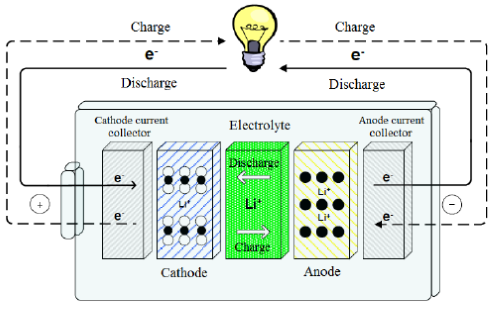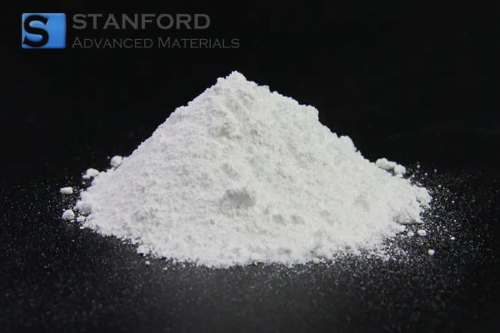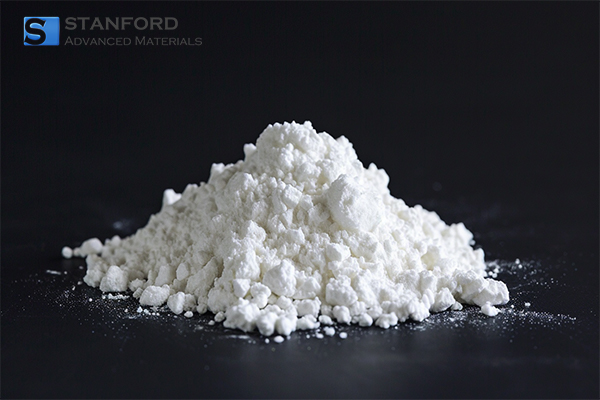LATP Solid Electrolyte: A Key Component For Solid-State Batteries
LATP (Lithium-Lanthan-Titanate-Phosphate) has emerged as an important material in the advancement of energy storage technologies, particularly in solid‐state batteries. Its measured properties have drawn the attention of researchers and manufacturers who seek to enhance battery performance, safety and efficiency.
This article presents detailed information on the main features, applications and concepts associated with LATP.
 [1]
[1]
What is LATP?
Lithium-Lanthan-Titanate-Phosphate (LATP) is a crystalline compound that integrates lithium (Li), lanthanum (La), titanium (Ti) and phosphate (PO₄) into a stable structure. The combination of these elements produces a high ionic conductor, which renders LATP a suitable candidate for use as a solid electrolyte in batteries. In contrast to conventional liquid electrolytes, which may be flammable and pose safety risks, LATP offers a safer alternative with a stable performance profile.

Key Properties and Advantages
The solid electrolyte LATP possesses a number of quantifiable properties that render it attractive for use in energy storage systems:
- High ionic conductivity: LATP demonstrates an ionic conductivity that at room temperature often exceeds 10⁻⁴ S/cm. This measurement is comparable to that of other solid electrolytes such as Lithium Phosphorus Oxynitride (LiPON).
- Broad electrochemical stability window: LATP exhibits a wide electrochemical stability window. This reduces the risk of undesirable reactions between the electrolyte and electrodes.
- Adequate mechanical strength: LATP provides mechanical integrity for battery structures during cycling. This property aids in maintaining the physical structure during charge and discharge operations.
- Safety: The solid state of LATP eliminates leakage and combustion risks typically associated with liquid electrolytes. This property is particularly important for applications that demand high energy output.
- Thermal stability: LATP remains stable at elevated temperatures, which is a critical factor for batteries that operate under variable thermal conditions.
Applications of LATP Solid Electrolyte
LATP solid electrolytes are most commonly employed in solid‐state batteries (SSB). These batteries may offer improvements in energy density, charging speed and safety over conventional lithium‐ion batteries.
- Electric vehicles (EVs): Batteries incorporating LATP electrolytes can potentially deliver extended range and reduced charging times compared with current lithium‐ion cells. The reduced risk of thermal runaway is particularly important in EV applications.
- Portable electronics: Research is being conducted into the use of LATP solid electrolytes in mobile phones, laptops and other portable devices. The increased energy density enables the design of smaller power sources, thereby contributing to reduced device weights and sizes.
- Grid storage: LATP-based solid-state batteries are under consideration for energy storage systems powered by renewable sources such as solar and wind. They offer the prospect of higher capacity and longer service life for large-scale storage solutions.
- Medical devices: The non-flammable and stable nature of LATP makes it appropriate for powering medical devices that require reliable, long-life battery operation. This is particularly significant for implantable devices and sensor applications.
LATP in Comparison to Alternative Solid Electrolytes
LATP is a viable solid electrolyte for lithium‐ion batteries in solid state. There are also alternative solid electrolytes considered for these batteries, for example:
- Sulphide-based electrolytes: Materials such as Li₂S-P₂S₅ offer high ionic conductivity. However, their sensitivity to moisture restricts practical application.
- Phosphate-based electrolytes: Other phosphate materials such as Li₇La₃Zr₂O₁₂ (LLZO) have high ionic conductivity and are stable in air. LLZO does present challenges regarding dendrite formation and mechanical instability.
- Oxide-based electrolytes: Solid oxides, including garnet-type Li₇La₃Zr₂O₁₂ and perovskite materials, demonstrate acceptable electrochemical stability. Their ionic conductivity is generally lower than that of LATP, yet remains within acceptable limits for solid‐state battery operation.
Each electrolyte type presents quantifiable challenges in terms of conductivity, stability and compatibility with lithium anodes.
Conclusion
The LATP solid electrolyte serves as an important material within the development of solid‐state batteries. Its measured ionic conductivity, inherent safety and electrochemical stability render it a viable option for powering devices in various sectors, including electric vehicles and portable electronics.
Certain research challenges remain; however, ongoing scientific investigation and advancements in material science are expected to quantify further potential for LATP in energy storage applications. It is anticipated that LATP will play a key role in the further development of sustainable energy storage technologies.
Stanford Advanced Materials (SAM) supplies a range of ceramic materials at competitive prices and acts as a dependable partner within the battery industry. Their LATP powder is a nano-scale solid electrolyte material used in the development of solid‐state lithium‐ion cells.
Furthermore, they provide a variety of lithium‐ion batteries and electronic chemicals, including battery electrolyte solutions, battery cathode and anode materials, and chemicals for electronics assembly. These products have been produced to support advances in energy storage, electric vehicles and electronics manufacturing. For further information or to discuss your specific requirements, please visit our homepage.
Reference:
[1] Sousa, Rui & Sousa, J. A. & Ribeiro, J. & Goncalves, L.M. & Correia, J.H. (2013). All‐Solid‐State Batteries: An Overview for Bio Applications. 03/--/---- Portuguese Bioengineering Meeting, ENBENG 2013 – Book of Proceedings. 10.1109/ENBENG.2013.6518400.

 Bars
Bars
 Beads & Spheres
Beads & Spheres
 Bolts & Nuts
Bolts & Nuts
 Crucibles
Crucibles
 Discs
Discs
 Fibers & Fabrics
Fibers & Fabrics
 Films
Films
 Flake
Flake
 Foams
Foams
 Foil
Foil
 Granules
Granules
 Honeycombs
Honeycombs
 Ink
Ink
 Laminate
Laminate
 Lumps
Lumps
 Meshes
Meshes
 Metallised Film
Metallised Film
 Plate
Plate
 Powders
Powders
 Rod
Rod
 Sheets
Sheets
 Single Crystals
Single Crystals
 Sputtering Target
Sputtering Target
 Tubes
Tubes
 Washer
Washer
 Wires
Wires
 Converters & Calculators
Converters & Calculators
 Write for Us
Write for Us





 Chin Trento
Chin Trento



